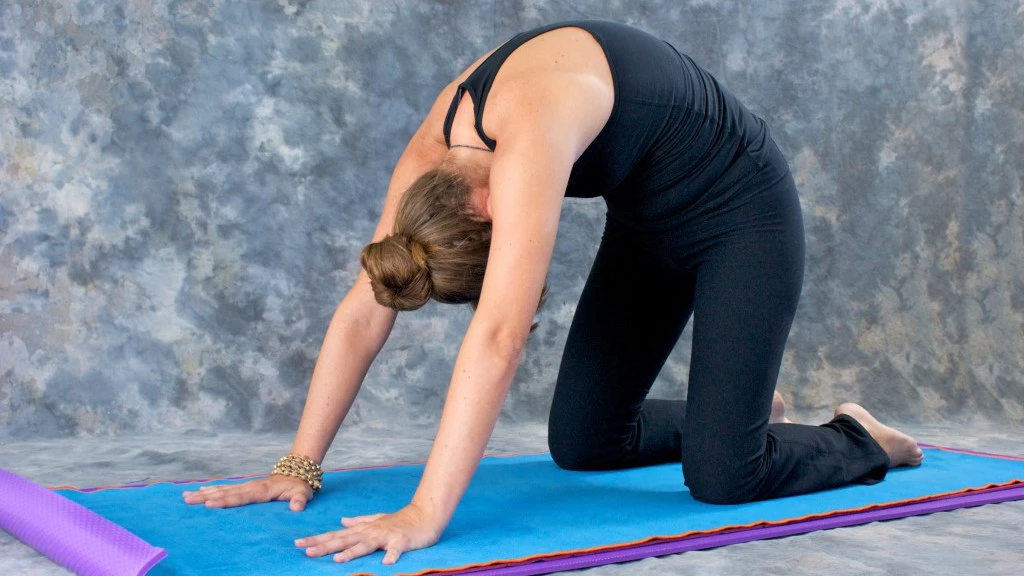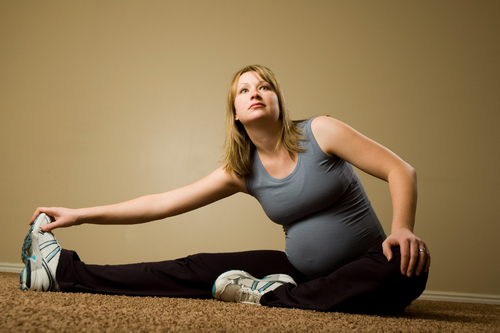Yoga and Pregnancy: A Winning Combination for Mothers and Babies

Pregnancy can be one of the most exhilarating and happy times in a woman’s life. With advances in pre-natal care and nutrition, mortality rates are down, and mothers and babies are generally far healthier at birth. Yoga is now rapidly becoming an additional, effective practice to help to increase health and decrease stress during pregnancy.
Several studies suggest that gentle, prenatal yoga classes are associated with a number of health benefits for pregnant women, including reduced anxiety and stress, decreased lower back pain, headaches and shortness of breath, and improved sleep. Pelvic floor exercises common to prenatal yoga classes are also linked to greater flexibility and strength of the muscles needed during childbirth.
Yoga may even be useful for women with high-risk pregnancies. A recent study published in the International Journal of Yoga (2013) looked at the effects of a gentle, meditative yoga practice in sixty-eight women expecting twins. The women had elevated pregnancy risk, including age (women who were less than 20 years or more than 35 years old), prior obstetric difficulties, obesity, or a family history of complications during pregnancy. The women were assigned to either a yoga or non-yoga control group.
The yoga group engaged in a restorative yoga practice 3 times per week for 3 months. At the end of the study period, all the women in the yoga group reported feeling positive energy, relaxation, and wellbeing following the yoga practice. Several physiological indicators of maternal health also suggested that yoga might be of benefit to women with high-risk pregnancies. No adverse effects were reported. These preliminary findings suggest that well controlled prenatal yoga classes may be useful to women experiencing high-risk pregnancies.
 Well-designed prenatal yoga classes use a number of tools, including relaxation exercises, gentle stretching, simple postures to improve balance and strength, and breathing practices to induce calm and decrease shortness of breath. Guided imagery, mantra or chanting and meditation can also be used. Each of these tools helps to promote strength, health, and resiliency and to induce a calm, relaxed state.
Well-designed prenatal yoga classes use a number of tools, including relaxation exercises, gentle stretching, simple postures to improve balance and strength, and breathing practices to induce calm and decrease shortness of breath. Guided imagery, mantra or chanting and meditation can also be used. Each of these tools helps to promote strength, health, and resiliency and to induce a calm, relaxed state.
Not all forms of yoga are suitable for pregnant women, and those considering yoga should consult their physician prior to beginning yoga classes. Particularly avoid practices involving strenuous postures, vigorous movement, and high temperatures, as these are not suitable during pregnancy. Also refrain from postures that involve lying on the belly or flat on the back, deep forward or backward bends and twists, as well as positions in which the legs are elevated above the heart or head. Props such as blankets and bolsters can be a great aid to make yoga postures safer and more relaxing and restorative for pregnant women.
Yoga has long been credited with physical, mental, and spiritual benefits. The growing body of evidence suggests that both mothers and their infants may benefit from incorporating gentle yoga into their lives.
Source
Jayashree R, Malini A, Rakhshani A, Nagendra H R, Gunasheela S, Nagarathna R., Faculty of Division of Yoga and Life Sciences, Vivekananda Yoga Research Foundation (VYASA), Eknath Bhavan, Gavipuram Circle, K.G. Nagar, Bangalore, India.
Effect of the integrated approach of yoga therapy on platelet count and uric acid in pregnancy: A multicenter stratified randomized single-blind study. Int J Yoga 2013;6:39-46
http://www.ncbi.nlm.nih.gov/pubmed/23440456
Int J Yoga. 2013 Jan;6(1):39-46. doi: 10.4103/0973-6131.105945.


